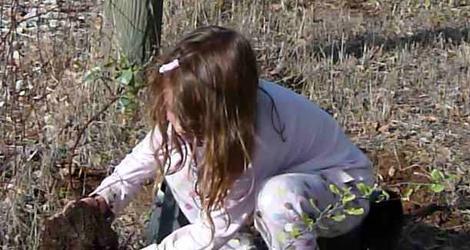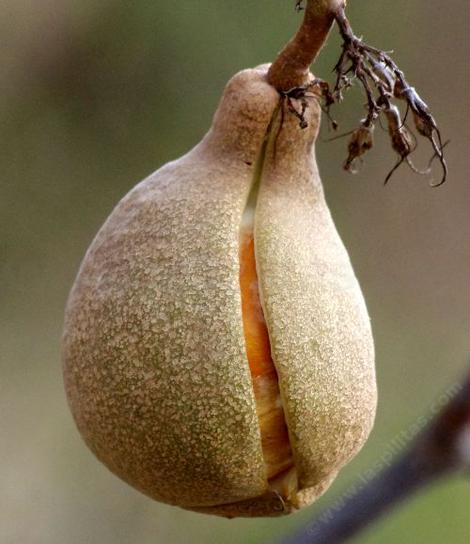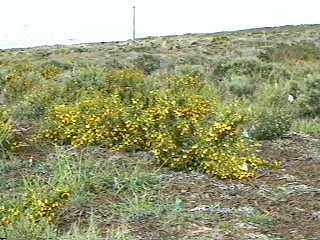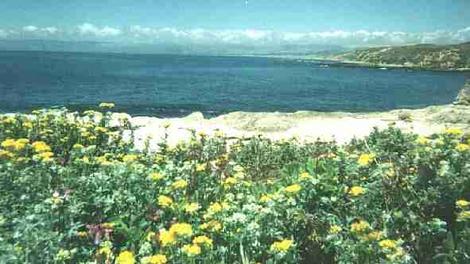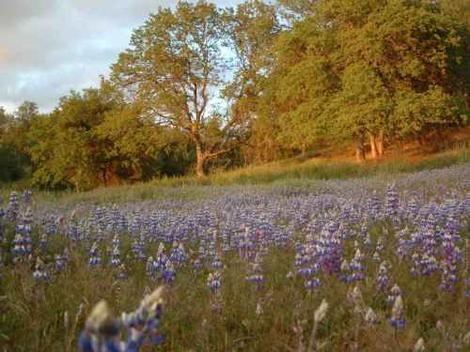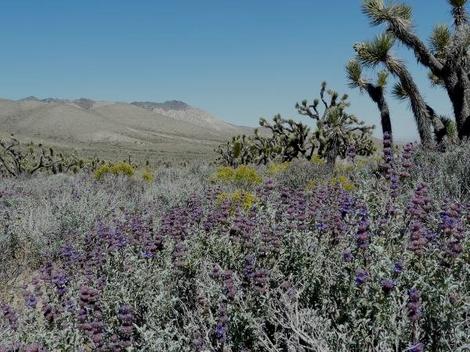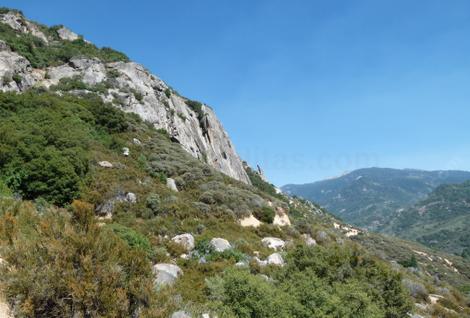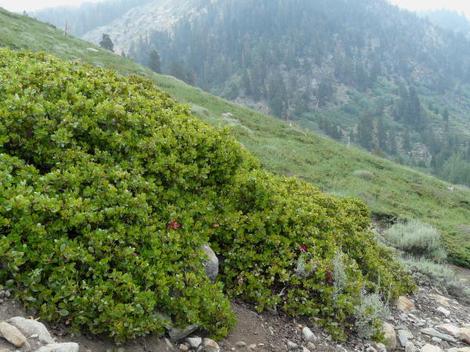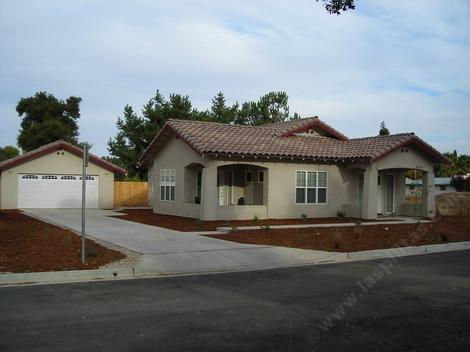When to plant California native plants.
In years like 2013, if you have the water, plant from about December to February in the hot interior, plant all year in the rest of the state, particularly if you're replacing a lawn or something else that needs a lot of water. If you're replacing the lawn you're going to save a lot of water in just a few months so do not feel guilty about using that water for change.
New plantings need to be watered once a week for the first season in a dry year like 2013. So as long as you can do that, you can replace that dead looking non-native landscape.
In a normal year,,in a regular lot in town, or with water for the first few months, all year planting is no problem as long as you plant each section at the same time. You may not want to keep digging holes and watering, in plantings older than a couple of years.
We've
normally lost less than 10% of our plants planting in spring-summer,
even when it is 110 F., but YOU HAVE TO WATER once a week or so to a
depth of at least a foot, preferably 18 inches, and then let the top
1/2 inch dry between waterings. If we have another year like 2013, you have to water the newer plantings once a week all year.
We've
been zinged with fall planting because the plants go into winter,
growing, instead of hardening off. We also can have an extended fall
with hot dry temperatures and the plants die of desiccation (the site
is drier then than in midsummer).
Winter planting in a cold winter climate(below 12 F) can be very risky. It takes a few weeks for the plants to harden off, and the plants do not have this time if you plant in the winter. If the plants are dormant or allowed to harden off, i.e., being grown in an equally cold climate, winter planting is easy. Do not worry unless your area gets below 15 F (-10 C) with no snow. AND, the soil is easy to dig in!
Both
the higher temperatures and longer days of early summer have been shown
to increase growth of some symbiotic microorganisms while others have
adapted to cool moist soils. If the site is a highly stressed
restoration site that is getting no water you are forced to do a
midwinter planting. In coastal or mild climates early winter planting
is preferred, as soon as the ground is moist from rains. If
water is
available for even two waterings and winter gets below 20 F, on most
sites March-April planting is preferred. (Back east that may be May.)
In most of California fall planting is the least desirable. This is because the microorganisms and the plants are at their weakest (the site is dormant), soil moisture levels are at their lowest, and the stupid critters eat anything that has green on it. These site conditions will draw from the plant rather than support it.
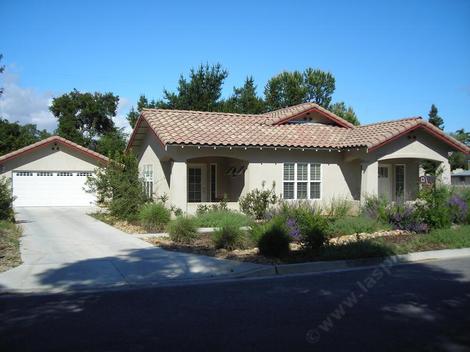
For more about planting.
For more about watering.
Drought tolerant plants.
For more, try typing it into the search box.
